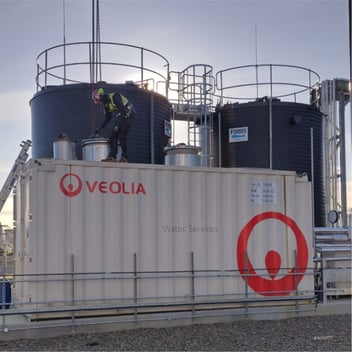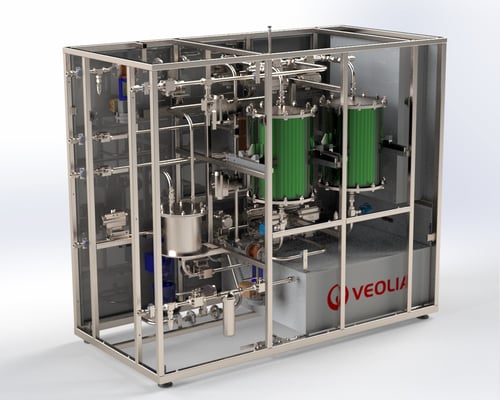The new EU Urban Wastewater Treatment Directive 2024/3019 has entered into force, introducing significant changes for the pharmaceutical and cosmetics industries. Under the Extended Producer Responsibility (EPR) principle, these industries (which represent the main source of micropollutants in urban wastewater) will be required to cover at least 80% of the additional costs associated with quaternary treatment implementation (Art. 9 and Annex III). We are therefore witnessing a profound transformation in the regulatory landscape for wastewater treatment.
This new regulatory framework extends companies' regulatory compliance obligations to the entire life cycle of their products, including the management of wastewater and waste generated during production processes. More stringent monitoring requirements and the gradual introduction of quaternary treatment will also be required.
Industry Challenges
Wastewater treatment in the pharmaceutical industry represents one of the most specialised and complex challenges in industrial environmental management. This industrial context requires specific knowledge of the GMP production and validation process, the sterile environment and related utilities, as well as synthesis, extraction, and fermentation processes. Companies in the sector must manage effluents containing a wide range of chemicals, solvents, and production residues that require customised and highly controlled treatment processes. Many traditional solutions, such as off-site disposal, not only entail significant costs and seasonal dependence on suppliers, but often no longer meet new environmental standards and end-user requirements for CDMOs (Contract Development and Manufacturing Organisation).
What is Isopropyl Alcohol
Isopropyl Alcohol (IPA), also known as isopropanol or 2-propanol, is a volatile organic compound widely used in pharmaceutical manufacturing as a solvent, cleaning agent, and intermediate in chemical synthesis processes. In pharmaceutical facilities, IPA is essential for equipment sterilisation, API (Active Pharmaceutical Ingredient) production, and various formulation processes. However, its presence in wastewater poses significant environmental and regulatory challenges. IPA is highly soluble in water, making it difficult to separate using conventional treatment methods, and its discharge can contribute to aquatic toxicity and oxygen depletion in receiving water bodies. With the new Directive 2024/3019 classifying pharmaceutical micropollutants as priority concerns, the effective removal of IPA from industrial effluents has become also a regulatory necessity.
An innovative solution for IPA in Wastewater

In this context, there is a particularly interesting case study carried out at a major pharmaceutical company in Ireland, where the company successfully implemented an innovative unit for the treatment of wastewater containing isopropyl alcohol (IPA). Thanks to Veolia's MPPS (Macro Porous Polymer Sorption) technology, the results were exceptional, with an IPA reduction rate exceeding 99.9% on a treatment capacity of 48 m³ of wastewater per day.
Technical Features and Benefits
Macro Porous Polymer Extraction/Sorption (MPPE/S) enables the recovery of hydrocarbon solvents from industrial wastewater streams, meeting the complex needs of modern pharmaceutical manufacturing plants.
This highly efficient technology can treat a wide range of solvents, both polar and nonpolar, including toluene and chlorinated solvents, with treatment efficiencies of up to 99.99%. Such high performance ensures that even trace amounts of solvents can be effectively managed, allowing the reuse of treated water for non-GMP processes and meeting the most stringent regulatory requirements and environmental standards.

The MPPE/S system's versatility in separating various solvents makes it particularly valuable for pharmaceutical industries that produce active ingredients by synthesis.
This dual functionality potentially transforms a waste management challenge into a resource recovery opportunity, aligning with the principles of the circular economy and potentially offering cost savings through solvent reuse or resale.
Thanks to its compact design and small footprint, the MPPE/S system can be easily integrated into existing plants, minimising operational disruptions. Its low energy consumption, especially when compared to traditional steam stripping methods, helps reduce operating costs and the carbon footprint.
Environmental impact and sustainability
The implementation of this technology has led to significant improvements in the plant's environmental management. The system substantially eliminates the costs of off-site wastewater transportation and incineration, significantly reducing the plant's carbon footprint. The ability to recover and potentially resell IPA in this case study represents a concrete example of the circular economy applied to the industrial sector.
Intelligent management and maintenance
The system is designed with automated management of alternating regeneration of the two vessels, requiring minimal operator intervention. The operational flexibility and comprehensive design allow for effective management of flow rate variations and pressure peaks, ensuring consistent performance over time. The efficient design, combined with low noise and emissions, helps achieve the company's sustainability goals.
Regulatory Compliance and Future Prospects
The solution not only meets current regulatory requirements but also sets the benchmark for future standards in industrial wastewater treatment. The successful implementation opens up new perspectives for the industry, demonstrating how it is possible to effectively balance regulatory compliance needs with operational efficiency and economic sustainability.
Growing interest in the reuse of treated water and the possibility of replicating this system at other production sites suggest a promising future for this technology. This case study demonstrates how technological innovation can effectively address emerging regulatory challenges while creating added value through resource recovery.
To discover all the details of the case study, including specific operational parameters, long-term results, and future prospects of the project, please see here.